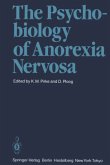The tridecapeptide neurotensin (NT) was first identified in bovine hypothalamic extracts and characterized by Carraway and Leeman (1973,1975,1976) and has subsequently been found in all classes of vertebrates (Carraway and Leeman 1976; Kitabgi et al. 1976; Kataoka et al. 1979; Langer et al. 1979; Reinecke et al. 1980a; Cooper et al. 1981; Grant et al. 1982; Carraway et al. 1982; Eldred and Karten 1983), many invertebrates (Reinecke et al. 1980 b; Grimmelikhuijzen et al. 1981; Price et al. 1982), and certain bacteria (Bhatnagar and Carraway 1981). It is distributed throughout the mammalian central nervous system (CNS) (Uhl and Snyder 1977 a, b), gastrointestinal tract (Sundler et al. 1977; Schultzberg et al. 1980), cerebrospinal fluid (CSF), adrenals, pancreas, and plasma (Fernstrom et al. 1980). When administered systemically, the peptide has a variety of effects such as hypotension, hyperglycemia, decreased gastric acid secretion, decreased gut motility, and altered secretion ofanterior pituitary hormones (Leeman and Carraway 1982). NT apparently does not cross the blood-brain barrier in appre ciable quantities; however, when administered directly into the CNS, it produces a number of physiological and behavioral effects. A burgeoning body of evidence supports the role of NT as a neurotransmitter or neuromodulator. Thus far, het erogeneous CNS distribution, release of NT upon neuronal depolarization, satu rable and specific binding of NT to receptors, and degradation by peptidases have all been demonstrated.








